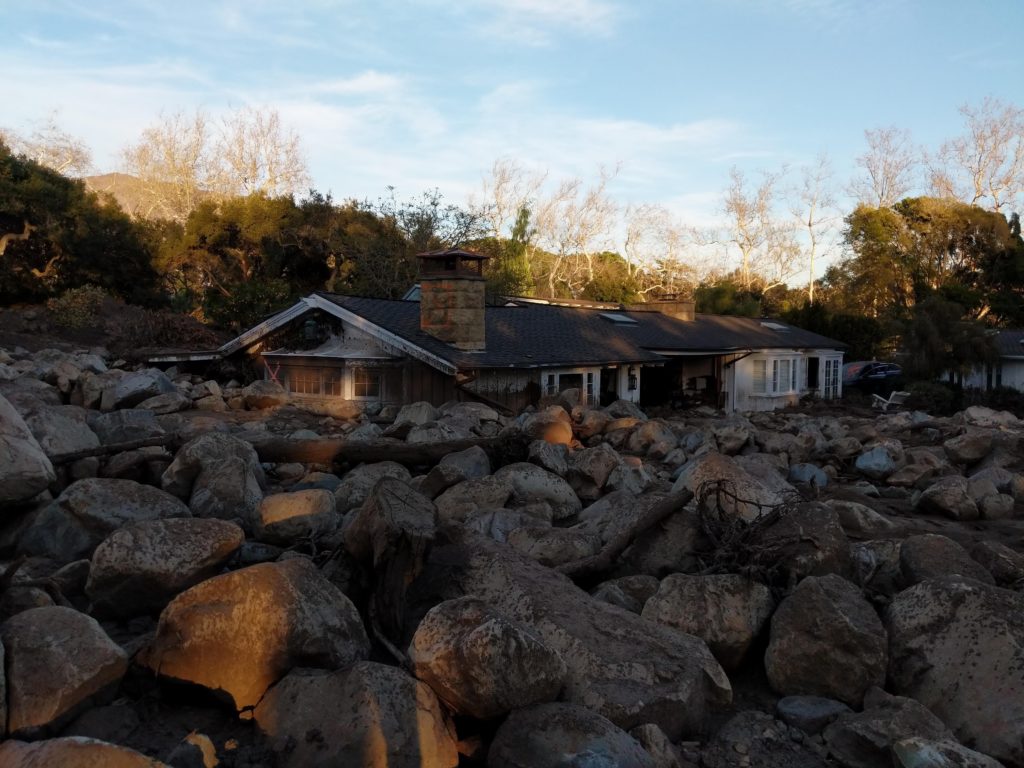
In early December 2017, the Thomas Fire ravaged nearly 300,000 acres of Southern California. The intense heat of the flames not only killed trees and vegetation on the hillsides above Montecito, it vaporized their roots as well.
A month later, in the pre-dawn hours of January 9, a strong storm pelted the barren slopes with more than half an inch of rain in five minutes. The rootless soil transformed into a powerful slurry, churning down a creek-carved canyon and picking up boulders in the rush before fanning out at the bottom and barreling into homes. Twenty-three people died in the disaster.
Could this tragedy have been avoided? What is the tipping point at which a solid slope begins to ooze like a liquid? New findings from a team led by Douglas Jerolmack of Penn’s School of Arts & Sciences and School of Engineering and Applied Science in collaboration with Paulo Arratia of Penn Engineering and researchers from the University of California, Santa Barbara (UCSB), apply cutting-edge physics to answer these questions. Their study, published in the Proceedings of the National Academy of Sciences, performed laboratory experiments that determined how the failure and flow behavior of samples from the Montecito mudslides was related to material properties of the soil.
“We weren’t there to see it happen,” says Jerolmack, “but our idea was, ‘Could we learn something about the process of how a solid hillside loses its rigidity by measuring how mixtures of water and soil flow when they’re at different concentrations?’”
Continue reading “Physics of disaster: How mudslides move?” at Penn Today.
